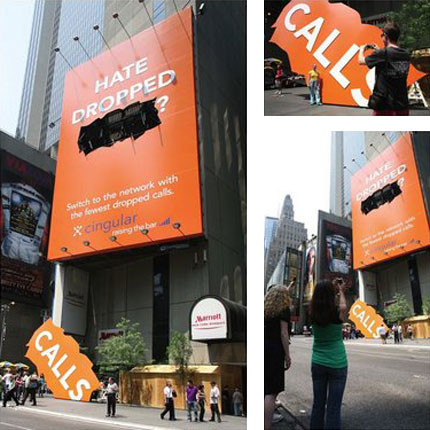That's one disruptive book cover if I've ever seen it. So what's the beef with guerrilla marketing you ask? (a free Big Mac to each person who half-heatedly laughed at the pun)
My question is: What is guerrilla marketing?
Not to be mistaken with gorilla marketing, a topic that has plagued marketers since the dawn of time:
Or actual guerrillas:
I guess you could try to market guns to guerrillas; perhaps using guerrilla marketing? Whatever that means. Maybe this video can help get to the core essence of "guerrilla marketing":
Ok, so a whole bunch of ads that are sometimes funny, sometimes provocative? Sometimes just downright ludicrous to try to get some attention. Wikipedia, the Master of all Knowledge, provides that it's a term keyed by Jay Conrad Levinson who wrote a book about the topic in 1984. His book suggests the following as the principles behind guerrilla marketing:
- It should be based on human psychology instead of experience, judgment, and guesswork.
- Instead of money, the primary investments of marketing should be time, energy, and imagination.
- The primary statistic to measure your business is the amount of profits, not sales.
- The marketer should also concentrate on how many new relationships are made each month.
- Create a standard of excellence with an acute focus instead of trying to diversify by offering too many diverse products and services.
- Instead of concentrating on getting new customers, aim for more referrals, more transactions with existing customers, and larger transactions.
- Forget about the competition and concentrate more on cooperating with other businesses.
- Guerrilla Marketers should always use a combination of marketing methods for a campaign.
- Use current technology as a tool to empower your business.
That list seems a little bit odd to me. Shouldn't that list be true of ALL current marketing and advertising campaigns? We've come a long way from bland ads that feature nothing but the product, a brand, a slogan and naked women.
Throw in a little bit of sexism and you've got beers flying out faster than brand values can be squeezed.
So, what is "guerrilla marketing"? It's not just an aggregate of many other useless names for marketing strategies, such as:
- Viral marketing -- through social networks
- Ambient marketing
- Presence marketing
- Grassroots marketing
- Wild Posting Campaigns
- Alternative marketing
- Buzz marketing -- word of mouth marketing
- Undercover marketing -- subtle product placement
- Astroturfing -- releasing company news to imitate grassroots popularity
- Experiential marketing -- interaction with product
- Tissue-pack marketing
It's what the current marketing environment should be. That Bavaria beer ad was from 2006. It's now 2009, and we're only seeing a big industry push for something innovative, interactive and entertaining for consumers. The cola wars, who are notorious for flinging marketing dollars like dung at a wall hoping some will stick are finally catching on. The days of boring beer ads and big ad spend are over. The entire industry is now looking to maximize ROI, and not JUST in sales, but in measruable consumer data. This data is alot easier to measure from the interactive level of "guerilla marketing", which is in fact the future of how all ROI-maximized advertising will soon be.
So what is guerilla marketing? It's just an umbrella term for any type of advertising that isn't bland or boring, likely fueled by old-fashioned marketing firms who want to make it seem illicit to create anything fresh. Much of what is guerilla is fresh, innovative and effective. Some of it is just disruptive-type marketing.
I've been struggling for the longest time to try to describe this new marketing direction without using 25-year old monikers. The best way to describe it is interactive marketing. Consumers are no longer interested in whom has the largest billboard; the current school-yard method of settling who has the biggest ad budget. It's about who can engage consumers best with their products to try to turn around a sale. A picture roll is in order:

Interactivity and consumer participation are the way to try to salvage some kind of brand loyalty. Consumers don't remember that Coke had the largest billboard in Times Square, but rather that Pepsi erected a soda-pop drinking fountain in the middle of Central Park. Because which form of advertising are they more likely to remember? Not just visually, but emotionally, and even sensory. Old-timers can try to isolate and almost joke about guerrilla marketing, but those innovative enough to leverage these low-budget (usually compared to general ad spend), high ROI-return marketing efforts are sure to see better value from their brands and feedback from their customers.
Right now "guerilla marketing" is that trendy, 20-year old nephew who won't cut his hair, as a few piercings, and listens to obscure bands to a 50 year old marketing dinosaur (isn't it interesting how 50 is "old" for a marketer?). Soon the tables will change and there'll be "dinosaur marketing" outed as old fashioned, and an umbrella term for all the bad marketing habits firms have finally let go of.
Now where's that meteor?...









No comments:
Post a Comment